Amongst the mythical beasts of the world’s legends and stories, the dragon is the fiercest and most admired of all. From ancient epics to modern fantasies, the dragon inspires awe, wonder, and whimsy in the imaginations of mankind. In this article, we’ll look at some of the most famous and influential dragon myths from around the world as well as the symbols and ideas that have been historically connected with dragons. Read on to learn more about the legendary history of the dragon!
Table of contents
Dragon symbolism and meaning
Dragons are often connected with fantasy and magic. Often, fairytales use dragons as their ultimate monsters. Princesses are guarded by dragons, knights are destined to slay dragons, and fantastical kingdoms are laid low by the might and power of dragons.
Because dragons are the ultimate villains in many fairytales, dragons sometimes represent unconquerable adversity. Dragons are often symbolic of the difficult circumstances that one has to overcome in order to succeed.
In a similar vein, dragons are often pictured guarding princesses in fairytales. Because of this, dragons may be connected with captivity or the feeling of being trapped. Dragons may also represent protection, defense, or power.
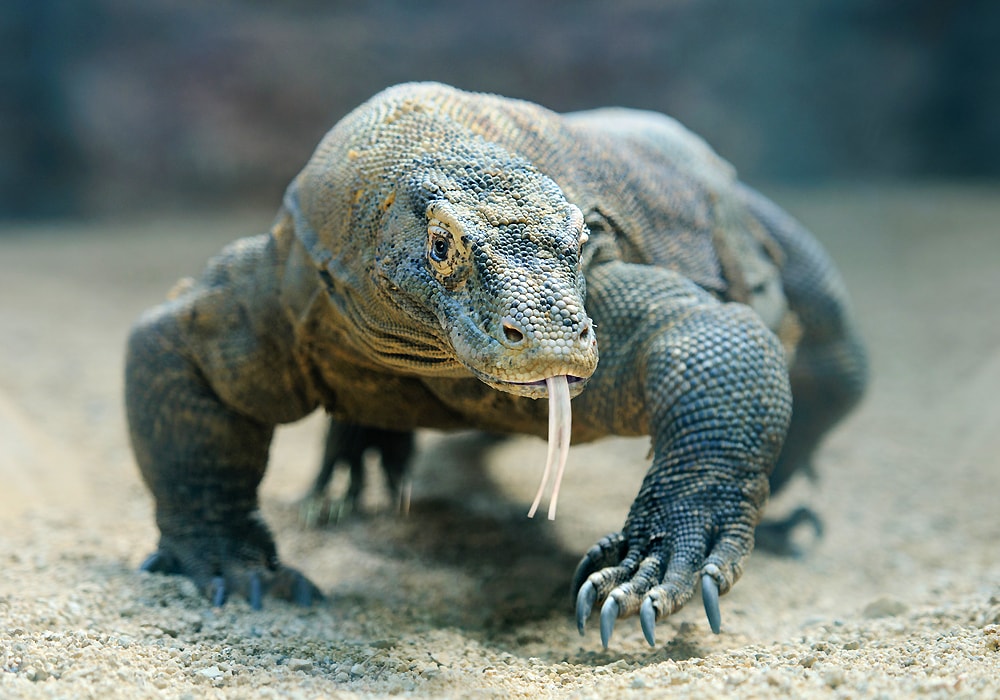
In one Greek myth, the hero, Heracles, is tasked with stealing the legendary Golden Apples from the Garden of the Hesperides. This task may not seem too difficult, but Heracles must first contend with the monster, Ladon, before he can access the apples. Ladon is usually depicted as a serpent-like monster with many heads. Beowulf, the hero of one of the oldest epics in human history, ultimately battles a fearsome dragon within its treasure hoard. In both of these ancient stories, the hero contends with a mighty dragon over the treasures hidden within its hoard. These stories, and many similar stories, connect dragons with greed and selfishness. In modern fantasies, this trope persists. Dragons are very often thought of as the ultimate symbol of avarice and hoarding behaviors. (1)(2)
Dragons are sometimes connected with extreme weather conditions. In some cultures, dragons are thought of as bringing storms or controlling the winds. In general, dragons are sometimes connected with the legendary powers of the forces of nature. (3)
Because they are often found in fairytales, dragons are sometimes connected with innocence, imagination, and childhood. Furthermore, dragons are thought of as regal and majestic. They are occasionally connected with kingship, leadership, or adventure.
Dragons are often thought of as capable of breathing fire. For this reason, dragons are often associated with elemental fire. Fire is a force for destruction, but it is also a rejuvenating and renewing force. Dragons can be connected with death and destruction as well as rebirth and purification.
Finally, dragons are sometimes associated with evil, the devil, or deception. Dragons are often depicted as serpent-like and are sometimes connected with the biblical concept of sin.
Dragon Native American symbolism
According to the native peoples of Oregon, the Amhuluk is a fearsome serpent-like monster who dwells in the mountains. The Amhuluk is said to be a mighty and colorful serpent with great horns which it would use to impale its victims. According to legend, the Amhuluk is a feared creature who dwells in sacred waters and preys upon children. (4)
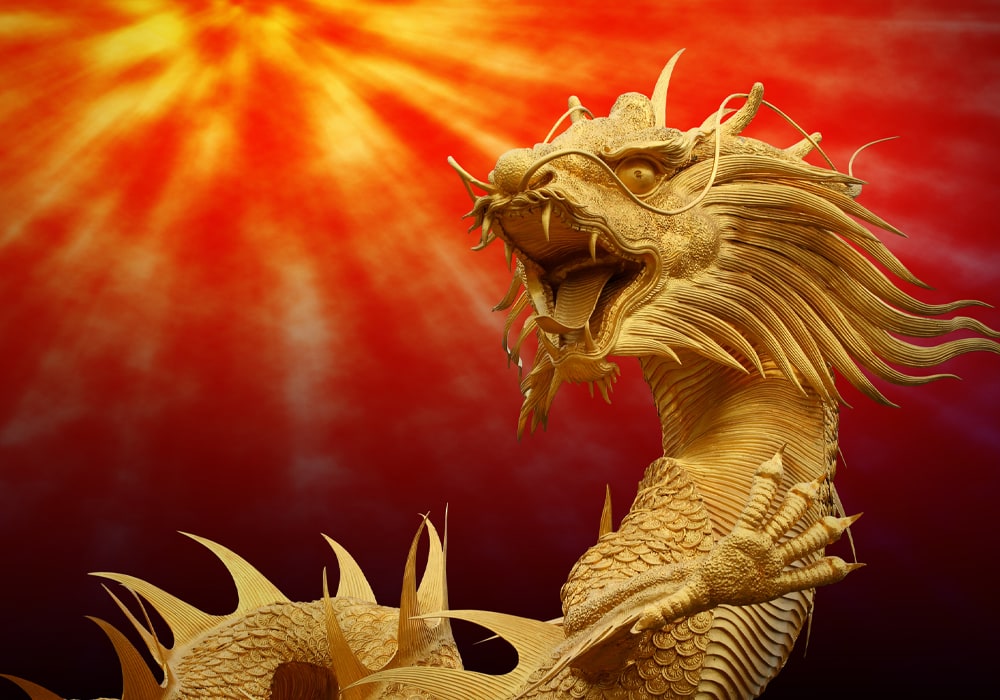
According to Huron Native American legends, the Angont is a vicious poisonous dragon which inhabits desolate caves and untamed sections of the wilderness. The Angont is thought of as a dangerous reptile which brings misfortune onto nearby peoples. According to myth, some medicine men and shaman sought this beast out in the hope that its vile poisons would contain cures for a variety of ailments. The myths state that the skin of the Angont was so poisonous that nothing good could come from it. Even the most skilled doctors could not make this poison into a cure. (5)(6)
Most Native American legends treat dragons are fearsome monsters which are connected with the wilderness. They are found in the most remote and dangerous areas and are thought to bring death and misfortune to the people unfortunate enough to cross paths with them. In many stories, these dragons are outfitted with body parts, such as horns or scales, which are coveted for their use in medicine.
Dragon Eastern Symbolism
The dragon holds so much significance to Chinese cultures that it is impossible to explain it here in its entirety. Throughout Chinese culture, dragons are connected with imperial power, with good luck, and with cosmic power and wisdom. Dragons are one of the twelve animals of the Chinese zodiac. People born under the sign of the dragon are thought to be born with a tendency towards an intelligent, curious disposition. The dragon zodiac is confident, honorable, and prosperous. (7)
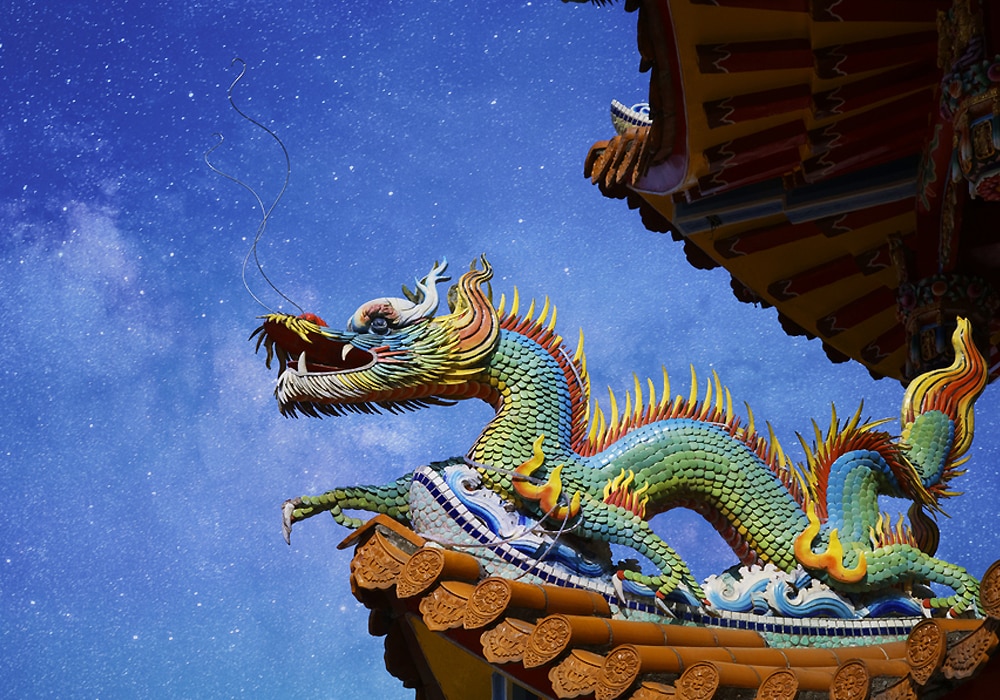
In much of Chinese mythology, dragons are associated with bodies of water as well as the weather. In fact, some of the most famous dragons of Chinese myth include the “Four Dragon Kings.” Because dragons are thought of as rulers of the water, the seas and lakes of China were thought to be guarded by these four mythical rulers. (8)
According to one Chinese myth, the people of China originated from a leader named Yandi. Yandi was said to be born via his mother’s telepathic relationship with a mighty dragon. Because of Yandi, some Chinese people consider the nation of China to be the descendants of the dragons. (9)
Dragon Christianity symbolism
Throughout the Bible, dragons appear as symbols of evil, sin, and desolate wilderness. References to dragons as symbols of evil forces are frequent throughout the Bible. The most well-known appearance of dragons in the Bible is the following:
“And there appeared a great wonder in heaven; a woman clothed with the sun, and the moon under her feet, and upon her head a crown of twelve stars: And she being with child cried, travailing in birth, and pained to be delivered. And there appeared another wonder in heaven; and behold a great red dragon, having seven heads and ten horns, and seven crowns upon his heads. And his tail drew the third part of the stars of heaven, and did cast them to the earth: and the dragon stood before the woman which was ready to be delivered, for to devour her child as soon as it was born.”
— Revelations 12:1-4 (10)
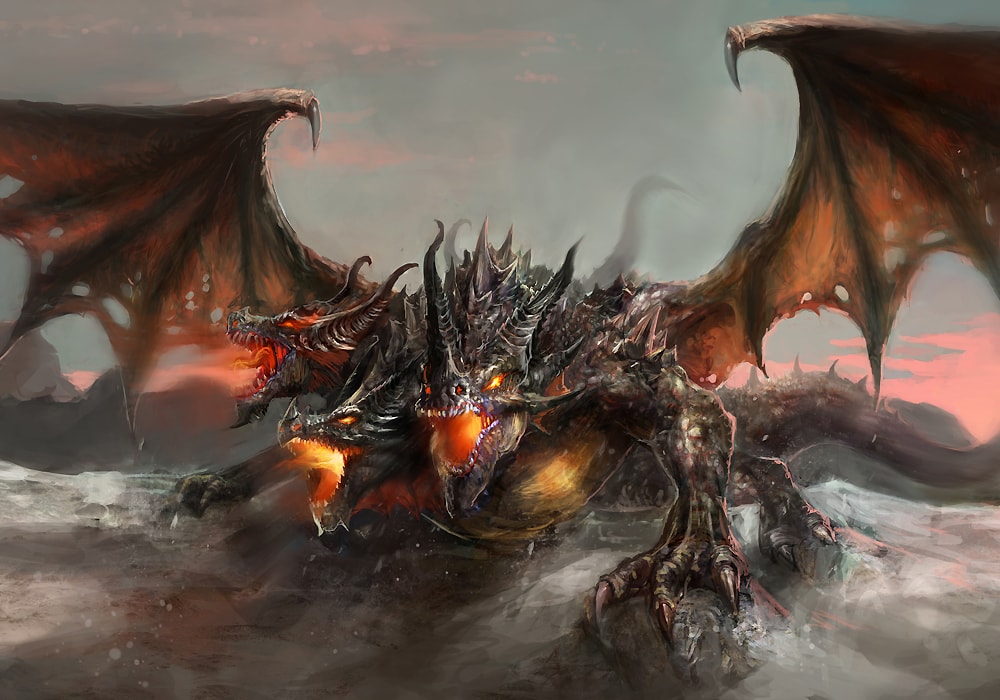
The dragon in this passage is one of the details described as occurring during the end times. This dragon is the incarnation of evil and is often thought of as an embodiment of Satan himself. (11)
Dragon Celtic symbolism
The dragon is one of the most important symbols of the Welsh people. A great red dragon even appears on the flag of Wales. In the legend of Lludd and Llewelys, an ancient Welsh tale, the king Lludd must contend with three plagues which come to threaten his kingdom. The first plague is a race of hostile enemies which descend upon the land. When Lludd follows the advice of Llewelys, he is able to poison his enemies and survive the first plague. Next, however, a pair of fearsome dragons appear above his kingdom, locked in an endless battle. As they fight, the two dragons transform into a variety of animals. Lludd defeats these dragons by luring them into a cauldron full of mead and burying them. (12)
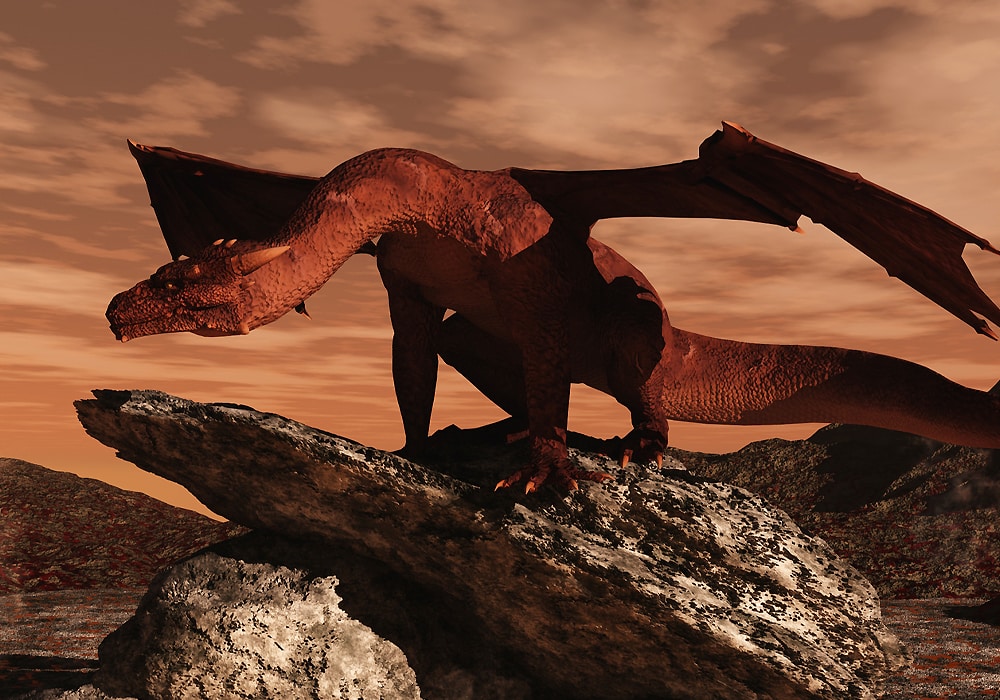
Dragons typically represent kingship in Celtic myths. They are often thought of as fearsome enemies for heroes to conquer. (13)
Dragon African symbolism
According to Egyptian mythology, Apep, or Apophis, is a great and fearsome serpent which is the enemy of the sun god, Ra. According to legend, Ra would bring about the sunrise each day by travelling across the sky in his boat. Apep was said to attack this boat each day thanks to his desire to destroy Ra. (14)(15)
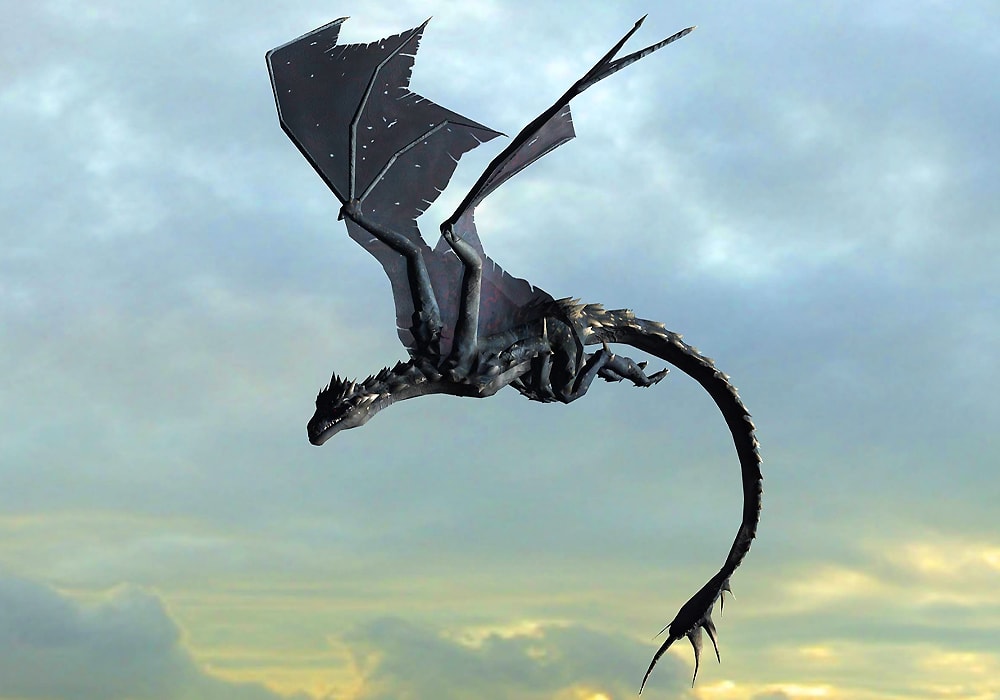
Dragon in dreams
Dreaming of dragons may represent one’s ambitions or obstacles. Dragons often represent something that we must overcome. Dreaming of a dragon may mean that you feel a new or renewed desire to conquer the challenges ahead and achieve your goals. (16)
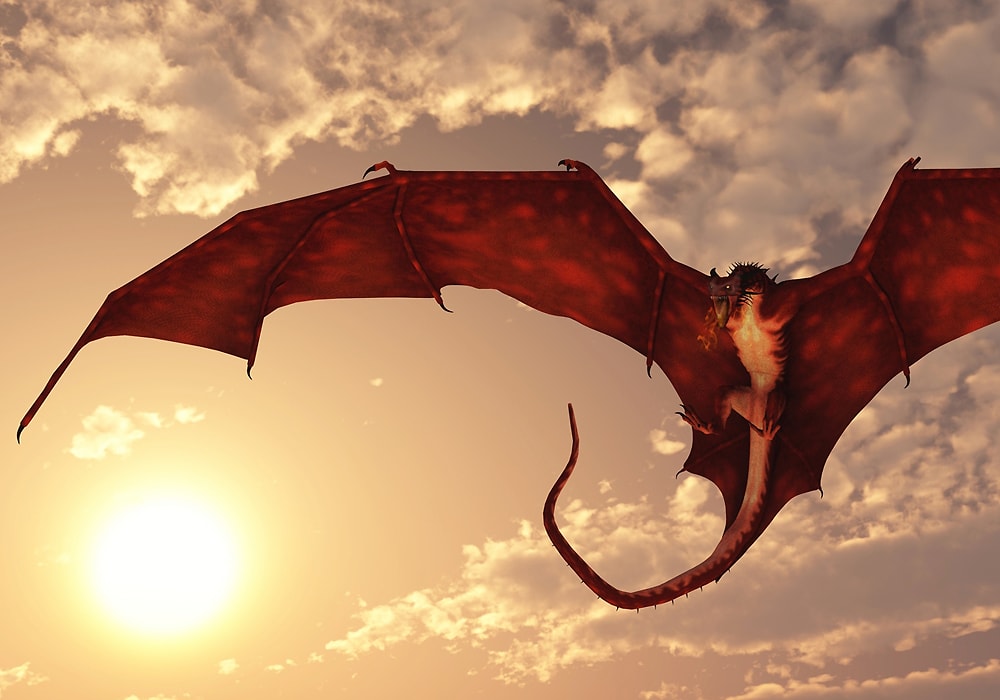
Dragons may also represent fantasy or escape. Dragons in dreams may mean that the dreamer craves adventure and spontaneity. If you’ve been dreaming of dragons then you might benefit from adding some spontaneity into your daily routine. Breaking out of old routines can be a great way to give your life a new sense of adventure and mystery.
A dragon dream may also represent greed or hoarding. Dreaming of a dragon can be a useful reminder of the fact that life’s greatest treasures cannot be stored or stockpiled. The best way to ensure that your life feels rich is to seek out amazing memories and good company.
Dragon encounters and omens
Encounters with dragons are not likely to occur in one’s real life. Still, one might encounter dragon imagery and wonder what such an encounter means. If images or stories of dragons have been appearing in your life, this may mean that you have a unique challenge to conquer. Dragons sometimes represent incredible adversity. Dragon encounters can be a sign to keep your courage up and face the coming challenges with optimism and joy.

Dragon encounters may also represent one’s childhood. Many children dream of riding dragons or fighting them and rescuing princesses from their grasps. A dragon encounter can be a great reminder to get back in touch with your inner child and to reclaim a child’s sense of adventure. (17)
Dragon mythology and folklore
One of the most significant dragon myths is that of Beowulf. Beowulf is a Germanic epic poem describing the hero, Beowulf. Beowulf is a legendary fighter who gains a reputation for slaying monsters. First, Beowulf slays the monstrous Grendel who was attacking the hall of a nearby lord. After Grendel is slain, Beowulf slays Grendel’s equally vicious and terrifying mother. After slaying these monsters, Beowulf is made a great king. Eventually, his prosperous kingdom is attacked by a dragon. Beowulf, although he is much older by this point, takes it upon himself to destroy the dragon in its lair. What follows is a bitter struggle. Beowulf manages to slay the dragon, but he is given a mortal wound in the process and he dies shortly thereafter. (18)
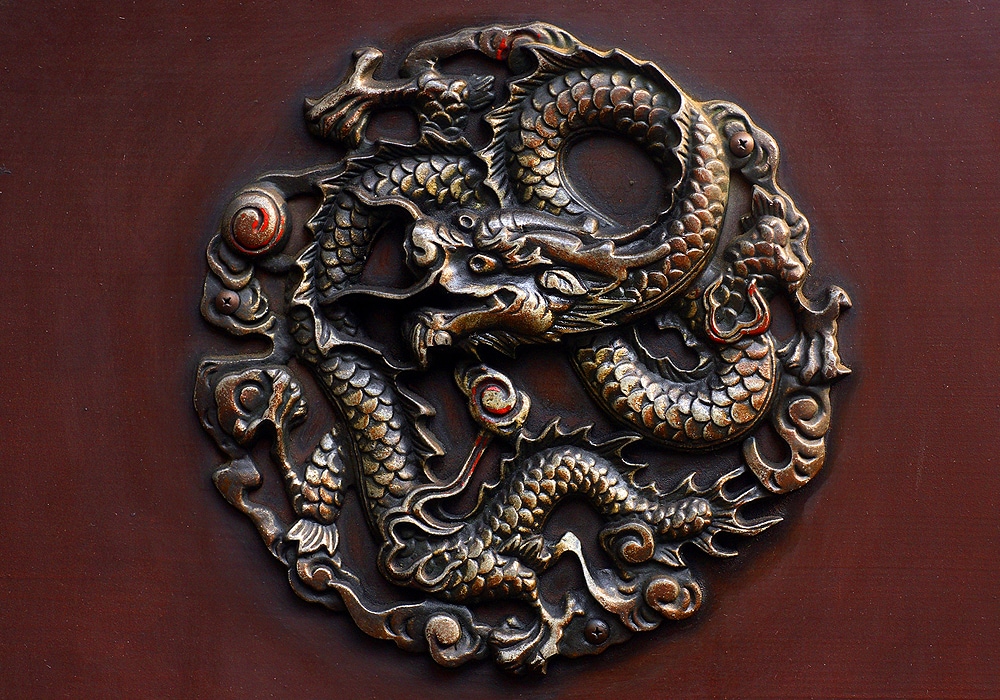
According to Chinese myth, a dragon called “Zhu Long” presides over Mount Zhong. Zhu Long is said to have a body that is miles long and bright red. He is said to have a human face with two piercing eyes which hold an unusual power. When his eyes close, it is said that the sun sets and brings darkness to the land. When his eyes open, the sun bathes the world in light. (19)(20)
Dragon spirit animal
If your spirit animal is the dragon then you are an ambitious and powerful person with incredible spiritual strength. The dragon spirit animal is proud, honorable, wise, and patient. People with the dragon as their spirit animal are naturally talented leaders. Despite this, they often have trouble getting close to people.
The dragon spirit animal is prone to the sins of pride and greed. These are challenges that trouble the dragon’s spirit. People with the dragon as their spirit animal may overcome these challenges through their personal wisdom, their sense of honor, and their relationships with others. (21)
Dragon totem animal
The dragon totem animal is associated with achievement and conquest. People with the dragon as their totem animal are unafraid of challenges and are confident in their ability to conquer any situation that arises.
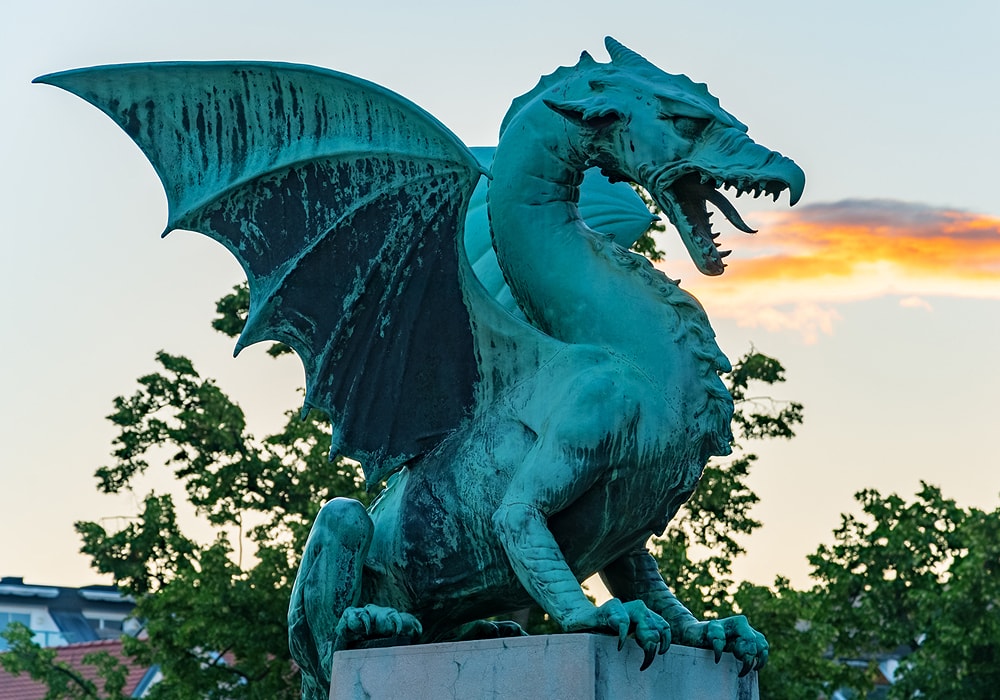
The dragon totem animal is deeply powerful and allows its holder to focus in on their goals with deadly precision. No situation is too formidable for the dragon totem to face.
Dragon power animal
The power of the dragon is purification and renewal. People with the dragon as their power animal are skilled healers who are excellent at bringing catharsis and closure to others. The dragon power animal understands the importance of “bitter medicine.” People with the dragon as their power animal understand that sometimes the only way to heal a wound is to cauterize away the rot.
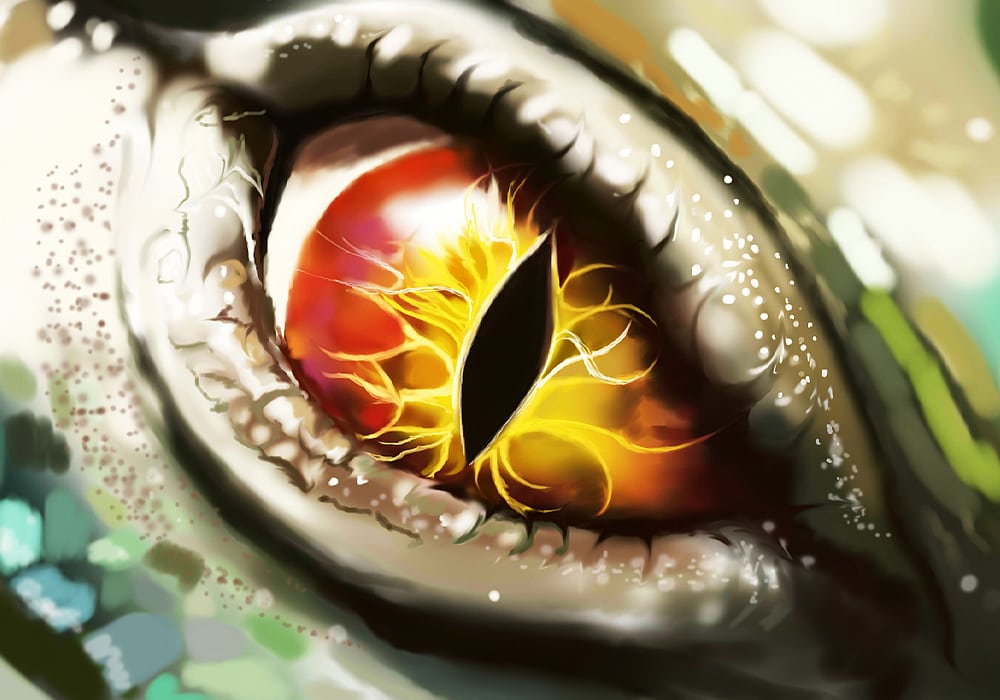
The dragon power animal encourages you to be firm and fierce in defending your needs. The dragon power animal has no patience for those who would harm it or hinder its healing.(22)
Dragon tattoo meaning
A dragon tattoo may represent fantasy, strength, power, captivity, honor, luck, or prosperity.
For someone of Chinese descent, a dragon tattoo may be a symbol of national or ethnic identity or pride. Similarly, a Welsh dragon tattoo may have special meaning for an individual of Welsh descent.
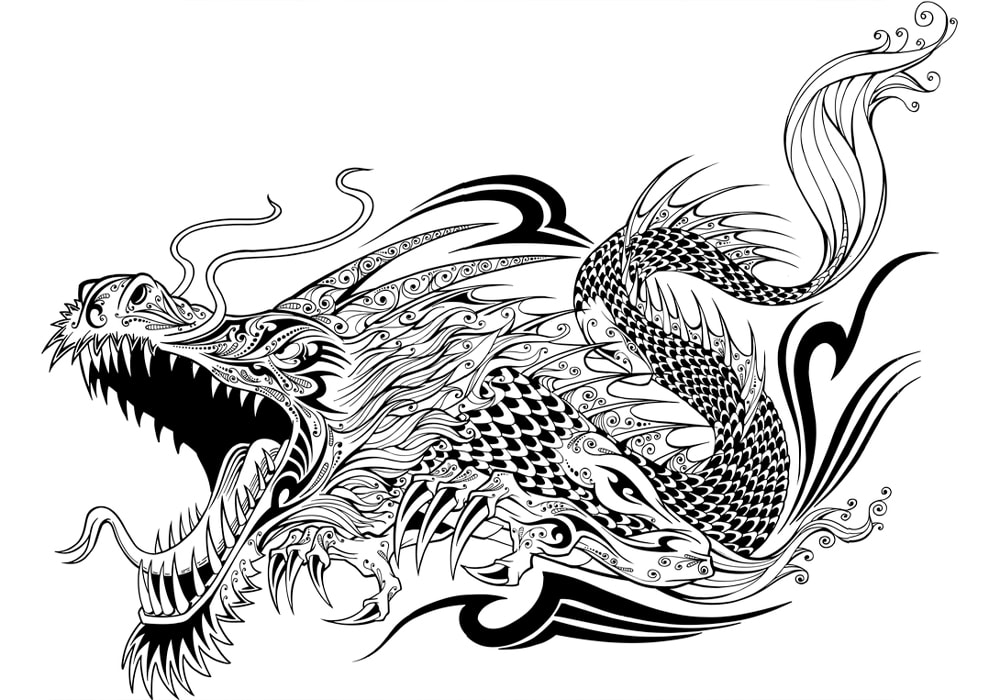
A fantastical dragon tattoo may represent an individual’s love of fantasy or their sense of childhood wonder.
Conclusion
Dragons are among the most legendary mythical beasts in all of human storytelling. From The Lord of the Rings to Harry Potter, some of the most beloved fantasy stories in literary history feature these beasts. Dragons are present in myths from around the world and the fact that they have endured so stubbornly into modern culture is a testament to their ability to inspire awe and wonder in the human heart.
Related
